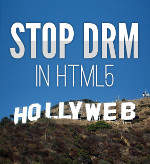There are too many speculative gaffs in this article to take it very seriously. They opine: "Mr. Obama’s new strategy makes just about every nonnuclear state immune from any threat of nuclear retaliation by the United States." Unless, of course, the unlikely scenario occurs that a country -- their leadership or population -- does something that the Obama administration doesn't like. Then we'll group them with the "outliers", N. Korea and Iran and then we can continue to threaten them with annihilation.
As far as the stated policy objective of Obama's "new" nuclear doctrine is concerned, even Sanger and Shanker appear to agree with Lindsay and Takeyh writing for Foreign Affairs who have concluded that a nuclear-armed Iran poses little by way of existential threat to the US (though they lament the difficulties in getting Iran to 'go along' with US interests in the region).
Simple errors of logic aside, Sanger and Shanker really hurl into the abyss down toward the bottom of the article:
If a backpack nuclear bomb went off in Times Square or on the Mall in Washington, the Pentagon and the Department of Energy would race to find the nuclear DNA of the weapon — so that the country that was the source of the material could be punished. But the science of “nuclear attribution” is still sketchy. And without certain attribution, it is hard to seriously threaten retaliation.Hard to believe you can get so much chicken-little thinking into one sentence. Each syllable of this sort of screed should be weighed by the reader. First -- there is no known nuclear device that can fit in a backpack (I think Sanger and Shanker watch too much Lost). "Nuclear attribution" is far from its state-of-the-art development. But calling it "sketchy" is just wrong. Nuclear material is well tracked and the properties of known fissile materials, from all the nuclear nations, are recorded in detail. Attribution is almost certain given the detonation forensics and human intelligence, which is very good on issues related to nuclear material.
The article is essentially fantasy and the Obama nuclear doctrine is the latest in a series of "might equals right" diplomacy.
It's only disappointing if you expected any leadership from Obama.

